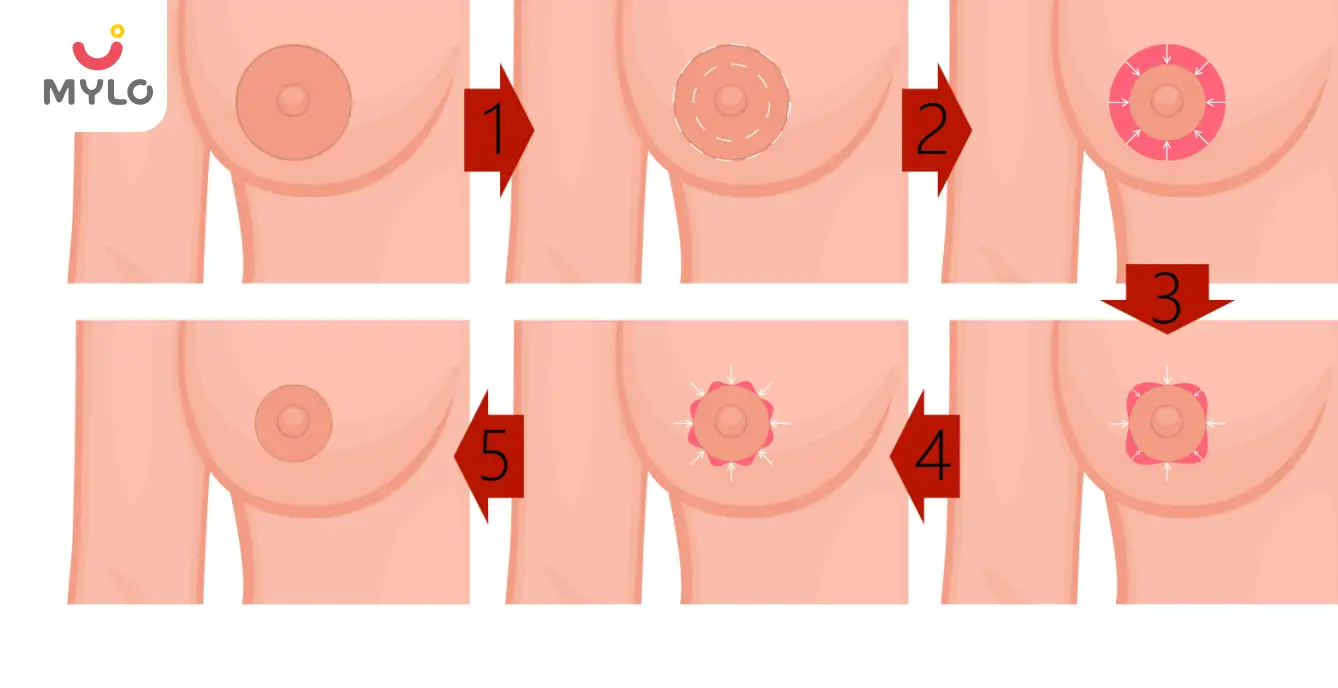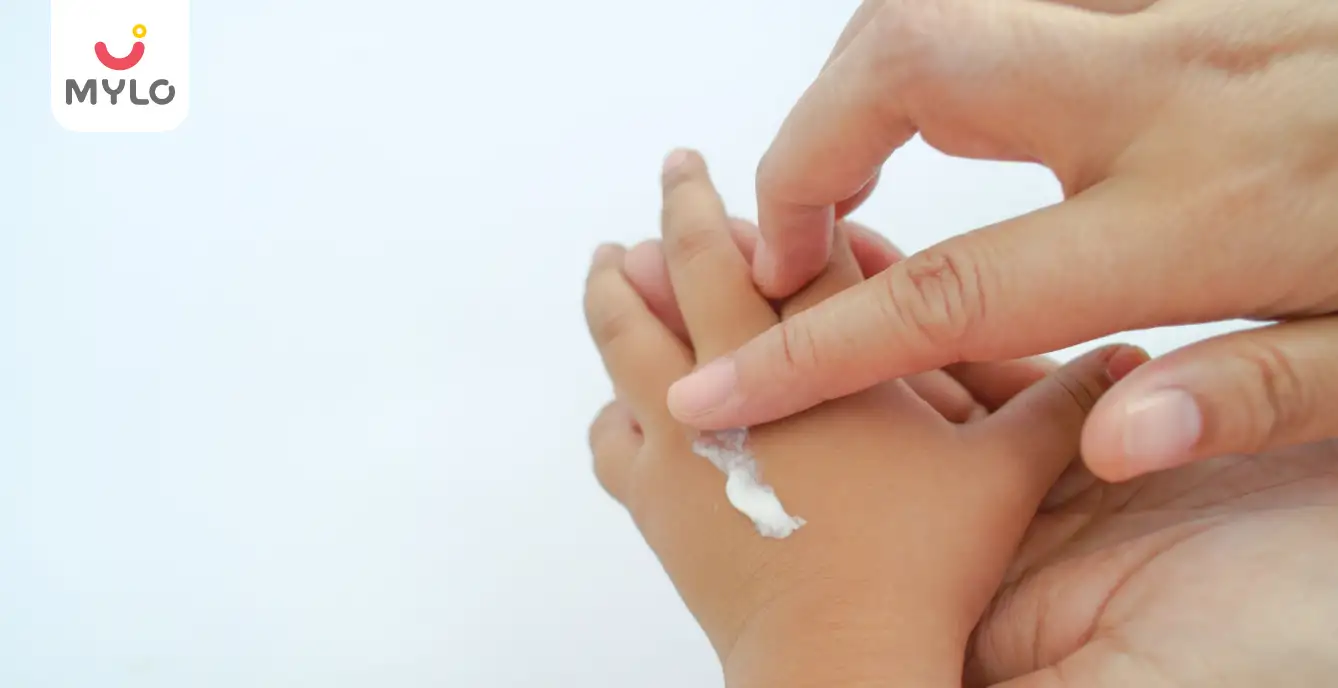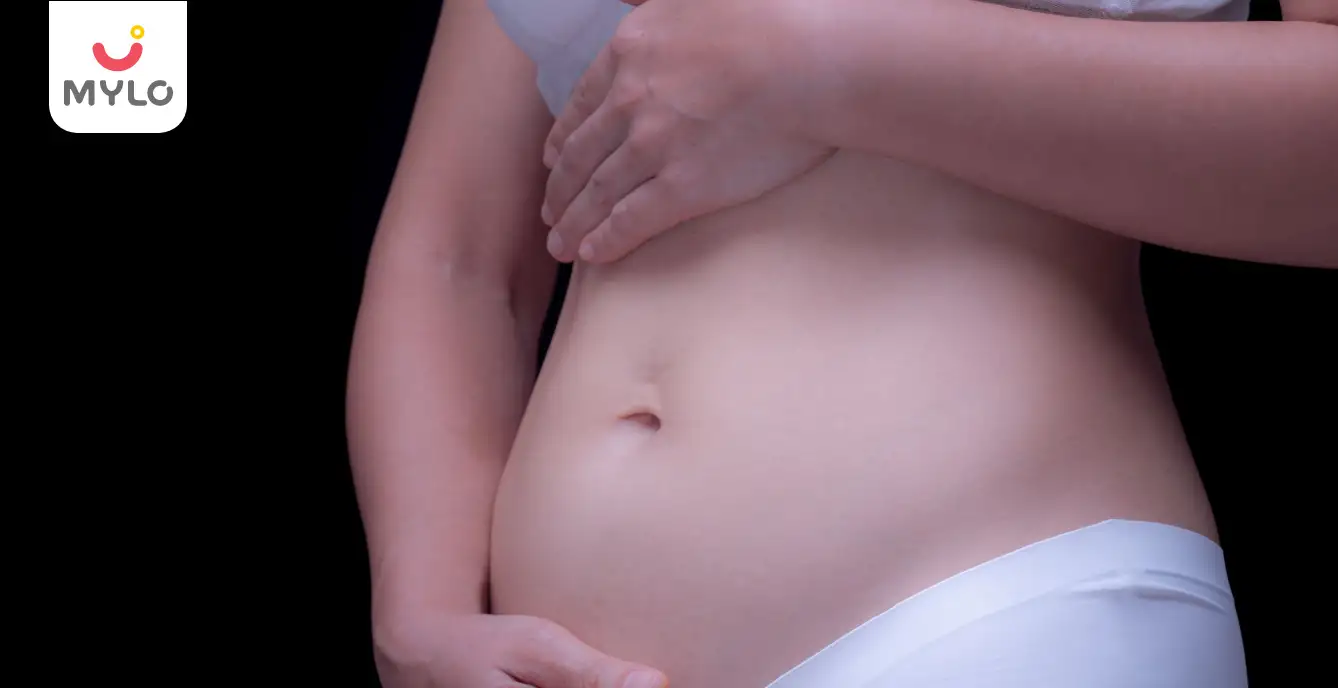- Home

- Feeding from a Bottle

- Disadvantages of Bottle Feeding and How to Turn Them into Advantages
In this Article
Feeding from a Bottle
Disadvantages of Bottle Feeding and How to Turn Them into Advantages
Updated on 25 October 2023



Medically Reviewed by
Dr. Sweta Bajaj
Lactation Consultant, Child Birth Educator, Dentist - BDS Dentist| Certified Lactation and Infant and young child Feeding consultant, Birth educator
View Profile

When Rhea welcomed her baby boy, Rudro, into the world, she was overwhelmed with parenting advices from friends and relatives around her. Among the many pieces of advice was not to bottle feed her baby as it could increase the risk of infections and eventually, tooth decay. But Rhea was not among the mothers who could be persuaded so easily. So, she decided to research thoroughly the disadvantages of bottle feeding.
Once she uncovered the few disadvantages, she thought of compiling them in a guide for mothers like her. Next, she thought of how to turn these disadvantages into advantages for her little Rudro. So, let’s make the most of Rhea’s valuable insights in this comprehensive guide for new parents.
Disadvantages of Bottle Feeding
Here are some side effects of bottle feeding you should know about:
1. Lack of bonding and emotional connection
One of the main drawbacks of bottle feeding is the perceived lack of bonding and emotional connection between the caregiver and the baby. Breastfeeding has long been associated with nurturing and closeness, and bottle feeding may seem impersonal in comparison.
2. Increased risk of infection
Another shortcoming of bottle feeding is the increased risk of infection. Breast milk contains antibodies that help protect the baby from illnesses and infections. Bottle feeding, on the other hand, may introduce bacteria and germs if proper hygiene practices are not followed.
3. Potential for overfeeding and obesity
Bottle feeding may also lead to overfeeding and obesity if not done with caution. Unlike breastfeeding, where the baby controls the flow and amount of milk, bottle feeding allows for faster and continuous milk supply, which can result in overconsumption.
4. Difficulty with digestion and potential for colic
Some babies may experience difficulty with digestion and a higher likelihood of colic when bottle fed. This can be attributed to the differences in the composition of breast milk and formula.
5. Increased risk of tooth decay
Bottle feeding, especially with sugary liquids like juice or formula, can increase the risk of tooth decay. The continuous exposure to these substances can lead to cavities and dental problems in the future.
You may like also: Bottle Feeding Positions: Tips and Techniques for New Parents
How to Turn Side Effects of Bottle Feeding into Benefits?
Now that you know why bottle feeding is harmful, it is important to understand that there are ways to turn these side effects into benefits. By making conscious choices and implementing certain practices, parents can make bottle feeding a positive experience for both the caregiver and the baby.
1. Promoting bonding through skin-to-skin contact
Even though bottle feeding may not provide the same physical closeness as breastfeeding, parents can still promote bonding through skin-to-skin contact. Holding the baby close to the chest during feeding time can create a sense of warmth and security. Making eye contact, speaking softly, and engaging in gentle caresses can further enhance the emotional connection between the caregiver and the baby.
2. Ensuring proper hygiene and sterilization
To address the increased risk of infection associated with bottle feeding, it is crucial to prioritize proper hygiene and sterilization. Thoroughly washing bottles, nipples, and other feeding equipment with warm soapy water before sterilizing them can eliminate harmful bacteria. Using sterilization methods such as boiling or using a steam sterilizer can further ensure a clean and safe feeding environment.
3. Practicing paced bottle feeding
Paced bottle feeding is a technique that mimics the natural breastfeeding process, allowing the baby to control the flow of milk and prevent overfeeding. By holding the bottle in a slightly inclined position and pausing for breaks during feeding, parents can help the baby develop self-regulation skills and prevent the risk of obesity.
4. Choosing appropriate bottle and nipple types
Selecting the right bottle and nipple type can significantly improve the baby's digestion and reduce the likelihood of colic. Bottles designed to mimic breastfeeding, such as those with a wide base and a flexible nipple, can promote better latch and reduce the chances of digestive discomfort.
5. Implementing good oral hygiene practices
To prevent tooth decay, it is essential to establish good oral hygiene practices from an early age. After each feeding, gently wiping the baby's gums and teeth with a clean cloth or using a soft toothbrush can help maintain oral health. Avoiding prolonged bottle use and encouraging the transition to a cup as the baby grows older can also contribute to healthy dental development.
Effects of Bottle Feeding Too Long
While bottle feeding can be a convenient and effective method of nourishing a baby, there are potential effects that may arise from relying on bottle feeding for an extended period.
1. Impact on baby's nutrition and development
Continuing bottle feeding for too long can have an impact on the baby's overall nutrition and development. As the baby grows, their nutritional needs change, and transitioning to solid foods becomes crucial for meeting those needs. Prolonged bottle feeding may hinder the introduction of a varied and balanced diet, potentially leading to nutrient deficiencies.
To mitigate this effect, it is important to gradually introduce appropriate solid foods as recommended by healthcare professionals. Encouraging self-feeding and offering a wide range of nutrient-rich foods can help ensure the baby receives the necessary nutrients for optimal growth and development.
2. Potential for delayed speech and language skills
Bottle feeding for an extended period can also have an impact on the development of speech and language skills. The continuous sucking motion required during bottle feeding may limit the baby's opportunities to practice oral motor skills necessary for speech production.
To address this potential delay, parents can gradually introduce cup feeding and encourage the development of self-feeding skills. Offering age-appropriate foods that require chewing and using utensils can also promote oral motor development and support speech and language skills.
3. Impact on dental health and jaw development
Prolonged bottle feeding can affect dental health and jaw development. The continuous exposure to sugary liquids and the sucking motion required during bottle feeding can contribute to tooth decay, malocclusion, and improper jaw alignment.
To prevent these issues, it is important to transition from bottle feeding to cup feeding by the age of one. Introducing a sippy cup or a regular cup, along with encouraging the use of utensils, can promote proper oral development and maintain dental health.
4. Increased risk of chronic diseases
Studies have shown that prolonged bottle feeding may increase the risk of chronic diseases later in life, such as obesity, diabetes, and cardiovascular diseases. The higher calorie intake and potential overconsumption associated with bottle feeding can contribute to these health concerns.
To reduce the risk of chronic diseases, parents should gradually introduce solid foods and encourage healthy eating habits. Offering a variety of nutritious foods, limiting sugary drinks, and promoting an active lifestyle can help establish a foundation for lifelong health.
Weighing the advantages and disadvantages of bottle feeding
When considering whether to opt for bottle feeding or not, it is essential to carefully weigh the advantages and disadvantages. Every family's circumstances and needs are unique, and what works for one may not work for another.
1. Convenience and flexibility
One of the key advantages of bottle feeding is the convenience and flexibility it offers. Bottle feeding allows for easier sharing of feeding responsibilities among caregivers, providing opportunities for the primary caregiver to take breaks or return to work without compromising the baby's nutrition.
2. Including other caregivers
Bottle feeding allows other caregivers, such as partners, grandparents, or childcare providers, to actively participate in the feeding process. This can strengthen the bond between the baby and the extended family, while also giving the primary caregiver some much-needed support.
3. Addressing specific medical conditions or circumstances
In certain situations, bottle feeding may be necessary to address specific medical conditions or circumstances. For example, if the baby has difficulty latching or the mother is unable to produce sufficient breast milk, bottle feeding can ensure the baby receives adequate nutrition.
4. Supporting breastfeeding mothers
In cases where breastfeeding is not possible or challenging, bottle feeding can be a supportive option for breastfeeding mothers. It can provide a sense of relief and reduce stress, as it allows the mother to ensure her baby is receiving the necessary nourishment.
The Bottomline
There may be some disadvantages of bottle feeding, but with proper care and attention, these can be mitigated or turned into advantages. By promoting bonding through skin-to-skin contact, ensuring proper hygiene and sterilization, practicing paced feeding, choosing appropriate bottle and nipple types, and implementing good oral hygiene practices, parents can create a positive feeding experience for their baby.
References
1. Kotowski J, Fowler C, Hourigan C, Orr F. (2020). Bottle-feeding an infant feeding modality: An integrative literature review. Matern Child Nutr. NCBI
2. Li R, Scanlon KS, May A, Rose C, Birch L. (2014) Bottle-feeding practices during early infancy and eating behaviors at 6 years of age. Pediatrics. NCBI





Medically Reviewed by
Dr. Sweta Bajaj
Lactation Consultant, Child Birth Educator, Dentist - BDS Dentist| Certified Lactation and Infant and young child Feeding consultant, Birth educator
View Profile


Written by
Ishmeet Kaur
Ishmeet is an experienced content writer with a demonstrated history of working in the internet industry. She is skilled in Editing, Public Speaking, Blogging, Creative Writing, and Social Media.
Read MoreGet baby's diet chart, and growth tips

Related Articles
Related Topics
RECENTLY PUBLISHED ARTICLES
our most recent articles

Women Specific Issues
Big Areolas: A Comprehensive Guide to Causes, Risks and Treatments

Anaemia
Anemia During Pregnancy: Symptoms, Causes & Management

skin care
The Benefits and Risks of Using Hydrocortisone Cream for Babies

Second Child
The Ultimate Guide to Planning for Second Baby

Illnesses & Infections
The Ultimate Parent's Guide to Dealing with Boils in Babies

Baby Movements
2 Months Pregnant Belly: Understanding Your Belly and Baby's Transformation
- The Significance of Trilaminar Endometrium in Fertility: What You Need to Know
- Kanchanar Guggulu: Your Ultimate Guide to a Healthy Lifestyle
- First Trimester of Pregnancy
- Top 10 Comedy Movies on Hotstar to Make You Laugh Your Heart Out
- Stages of Pregnancy by Trimester
- Your Streaming Guide to the Best Web Series on Hotstar in Hindi
- Top Romantic Movies on Hotstar That'll Melt Your Heart
- When to Have Another Child: Timing and Tips
- Top 10 Benefits of Triphala: Discover the Hidden Health Secrets
- Ayurvedic Medicine for Irregular Periods: Discovering Ancient Remedies for Hormonal Harmony
- The Link Between Missed Period and White Discharge
- Vata Pitta Kapha: The Ultimate Guide to Discovering Your Ayurvedic Constitution
- Top 10 Romantic Web Series on Hotstar You Must Watch
- Back Pain During Period: Understanding the Causes and Solutions


AWARDS AND RECOGNITION
Mylo wins Forbes D2C Disruptor award
Mylo wins The Economic Times Promising Brands 2022
AS SEEN IN
















At Mylo, we help young parents raise happy and healthy families with our innovative new-age solutions:
- Mylo Care: Effective and science-backed personal care and wellness solutions for a joyful you.
- Mylo Baby: Science-backed, gentle and effective personal care & hygiene range for your little one.
- Mylo Community: Trusted and empathetic community of 10mn+ parents and experts.
Product Categories
baby carrier | baby soap | baby wipes | stretch marks cream | baby cream | baby shampoo | baby massage oil | baby hair oil | stretch marks oil | baby body wash | baby powder | baby lotion | diaper rash cream | newborn diapers | teether | baby kajal | baby diapers | cloth diapers |









